New type of logic gate promises to completely replace electricity with magnetic spin waves for computation.



A major threat to America has been largely ignored by those who could prevent it. An electromagnetic pulse (EMP) attack could wreak havoc on the nation’s electronic systems-shutting down power grids, sources, and supply mechanisms. An EMP attack on the United States could irreparably cripple the country. It could simultaneously inflict large-scale damage and critically limit our recovery abilities. Congress and the new Administration must recognize the significance of the EMP threat and take the necessary steps to protect against it.
Systems Gone Haywire
An EMP is a high-intensity burst of electromagnetic energy caused by the rapid acceleration of charged particles. In an attack, these particles interact and send electrical systems into chaos in three ways: First, the electromagnetic shock disrupts electronics, such as sensors, communications systems, protective systems, computers, and other similar devices. The second component has a slightly smaller range and is similar in effect to lightning. Although protective measures have long been established for lightning strikes, the potential for damage to critical infrastructure from this component exists because it rapidly follows and compounds the first component. The final component is slower than the previous two, but has a longer duration. It is a pulse that flows through electricity transmission lines-damaging distribution centers and fusing power lines. The combination of the three components can easily cause irreversible damage to many electronic systems.

What actually occurs in a superposition—the strange condition in which entities seem to be in two or more places or states at the same? This is the root question in quantum mechanics, and the answer was unknown until now. In a new research paper, a joint team of researchers from Israel and Japan, has described a novel experiment that could finally shed light on the true nature of this puzzling phenomenon.
The researchers estimate that their experiment, that can be carried out within a few months, could possibly allow scientists a sneak peek at where an object like a particle of light i.e. a photon will actually be when it is positioned in a superposition. And as per their predictions, the answer can be even stranger and more baffling than “two places at once.”
The characteristic occurrence of a superposition involves firing photons at two parallel slits into a barrier. One fundamental aspect of quantum mechanics is that the tiny particles can behave like waves, so that those passing through one slit “interfere” with those passing through the other. These wavy ripples either boost or cancel one another to create a new characteristic pattern on a detector screen. The oddest fact is that this interference occurs even if only a single particle is fired at a time. The particle seems to somehow pass through both slits simultaneously and displays interference with itself. This is a true superposition.
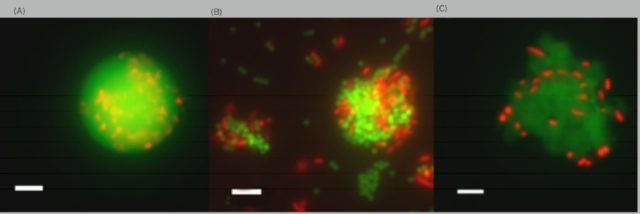
Researchers at Heriot-Watt University in Edinburgh used water collected from the Faroe-Shetland Channel and the Firth of Forth to set up their experiments. Plastics were added to the seawater and then incubated in conditions simulating the ocean’s surface. Within minutes, the minuscule pieces of plastic grouped together with bacteria, algae and other organic particles. The scientists are said to have been surprised to discover large masses of biopolymers formed the bulk of these plastic agglomerates. Team member Stephen Summers said: “This is a first step towards understanding how nanoplastics interact with natural biopolymers throughout the world’s oceans. ”This is very important, as it is at this small scale that much of the world’s biogeochemistry occurs. ”We found that the biopolymers envelope or engulf the nanoplastic particles, which caused the plastics to agglomerate into clumps. ”The nanoplastics, which are 100–200 times smaller than a bacterial cell, were actually incorporated into the agglomerates, which became visible to the naked eye in our lab experiments. ”The fact that these agglomerates become large enough to see raises concern, as they are likely to be seen as a food source by small marine animals.” We found that the biopolymers envelope or engulf the nanoplastic particles, which caused the plastics to agglomerate into clumps.
Researchers said micro and nano plastic particles mix with the bacteria secretions within minutes, forming clumps.


It is a few years since I posted here on Lifeboat Foundation blogs, but with the news breaking recently of CERN’s plans to build the FCC [1], a new high energy collider to dwarf the groundbreaking engineering triumph that is the LHC, I feel obliged to write a few words.
The goal of the FCC is to greatly push the energy and intensity frontiers of particle colliders, with the aim of reaching collision energies of 100 TeV, in the search for new physics [2]. Below linked is a technical note I wrote & distributed last year on 100 TeV collisions (at the time referencing the proposed China supercollider [3][4]), highlighting the weakness of the White Dwarf safety argument at these energy levels, and a call for a more detailed study of the Neutron star safety argument, if to be relied on as a solitary astrophysical assurance. The argument applies equally to the FCC of course:
The Next Great Supercollider — Beyond the LHC : https://environmental-safety.webs.com/TechnicalNote-EnvSA03.pdf
The LSAG, and others including myself, have already written on the topic of astrophysical assurances at length before. The impact of CR on Neutron stars is the most compelling of those assurances with respect to new higher energy colliders (other analogies such as White Dwarf capture based assurances don’t hold up quite as well at higher energy levels). CERN will undoubtedly publish a new paper on such astrophysical assurances as part of the FCC development process, though would one anticipate it sooner rather than later, to lay to rest concerns of outsider-debate incubating to a larger audience?
Hope springs eternal. Hearing that folk from China’s IHEP were later in contact with the LSAG on this specific issue, one infers due diligence is in mind, albeit seemingly in retrospect again, on the premise that as CERN take up the baton, significant progress in collecting further input for the overall assessment (eg from cosmic rays, direct astrophysical observations, etc) is expected in the ~20 years timescale of development.
Meanwhile those of us keen on new science frontiers, and large scale engineering projects, have exciting times ahead yet again with a new CERN flagship.
[1] Cern draws up plans for machine four times the size of Large Hadron Collider https://www.theguardian.com/science/2019/jan/15/cern-draws-up-plans-for-collider-four-times-the-size-of-large-hadron
[2] The Future Circular Collider Study (FCC) at CERN https://home.cern/science/accelerators/future-circular-collider
[3] The next super-collider, The Economist, 2018. https://www.economist.com/leaders/2018/01/11/the-next-super-collider-should-be-built-in-china
[4] Reflecting on China’s Ambition to Build the World’s Most Powerful Supercollider, Existential Risk/Opportunity Singularity Management, 2015. http://www.global-risk-sig.org/erosmB9F.pdf
[5] The Next Great Supercollider — Beyond the LHC : https://environmental-safety.webs.com/TechnicalNote-EnvSA03.pdf
[6] Progress in Seeking a More Thorough Safety Analysis for China’s Supercollider http://www.global-risk-sig.org/EROSM7Ui.pdf

The rules of quantum mechanics describe how atoms and molecules act very differently from the world around us. Scientists have made progress toward teasing out these rules—essential for finding ways to make new molecules and better technology—but some are so complex that they evade experimental verification.
With the advent of open-access quantum computers, scientists at the University of Chicago saw an opportunity to do a very unusual experiment to test some of these quantum principles. Their study, which appeared Jan. 31 in Nature Communications Physics, essentially hijacks a quantum computer to discover fundamental truths about the quantum behavior of electrons in molecules.
“Quantum computing is a really exciting realm to explore fundamental questions. It allows us to observe aspects of quantum theory that are absolutely untouchable with classical computers,” said Prof. David Mazziotti, professor of chemistry and author on the paper.
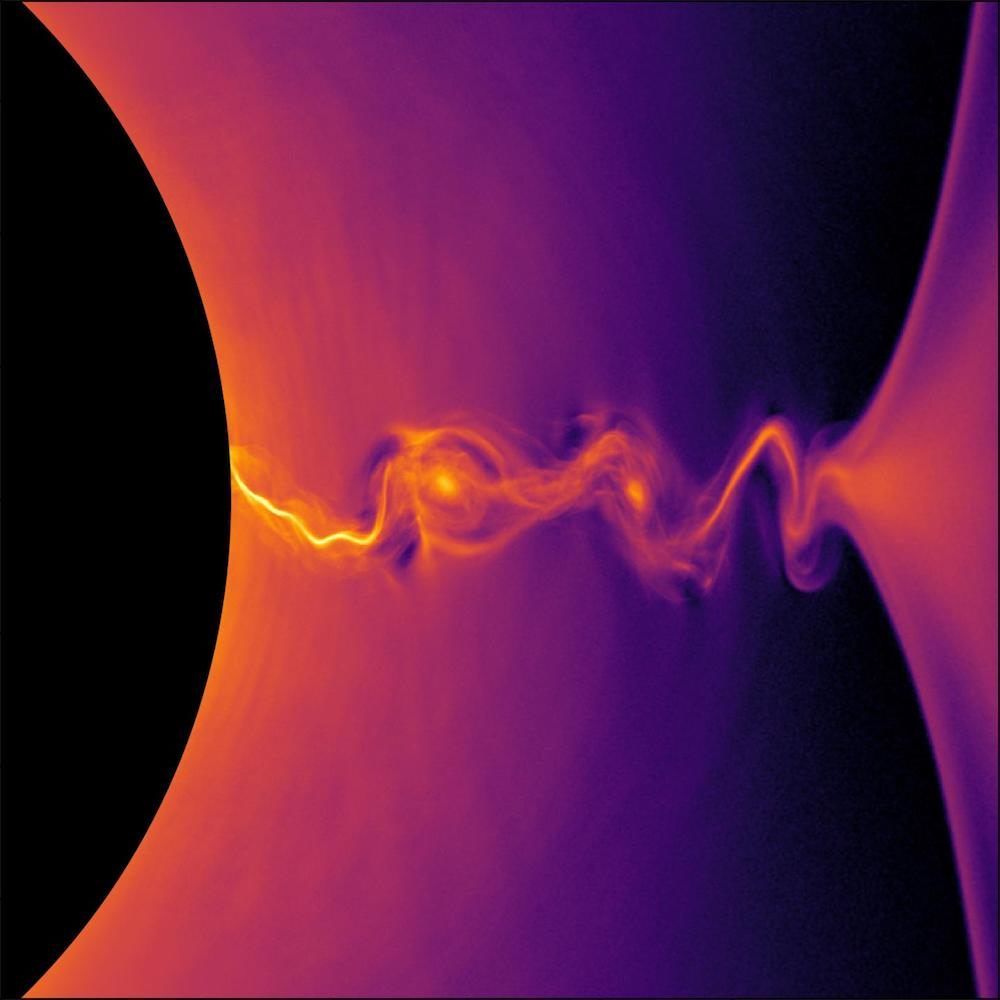
Stunning new images show how black holes produce tremendously bright jets millions of light-years long that can be seen across vast cosmic distances. The images were produced by a computer simulation and could help resolve an enduring mystery about how the jets form, the researchers behind the images said.
Despite their moniker, black holes aren’t always black. As a black hole consumes an object, gas and dust spins around the maw of the gravitational behemoth, and friction can heat the material on the edges to searing temperatures. This violent process creates lighthouse-like beams of charged particles that travel outward at near light speed, emitting radiation that can shine brighter than an entire galaxy. [11 Fascinating Facts About Our Milky Way Galaxy]
“They are like laser beams piercing the universe and allowing us to see black holes whose emission would otherwise be too dim to be detectable,” Alexander Tchekhovskoy, a computational astrophysicist at Northwestern University in Evanston, Illinois, told Live Science.
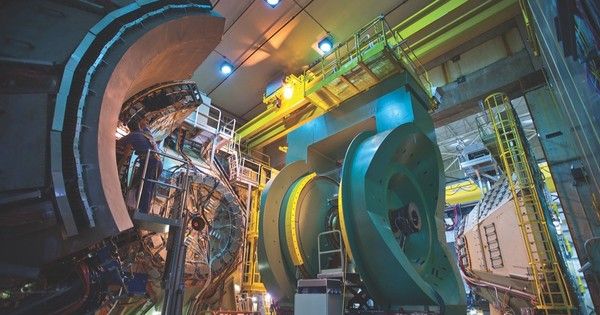
The team created the so-called quark-gluon plasma by smashing packets of protons and neutrons into a much heavier gold atom in the PHENIX Detector particle collider at Brookhaven National Laboratory in Upton, New York. It is theorised that this matter filled the entire Universe shortly after the Big Bang when it was still too hot for particles to come together to make atoms.
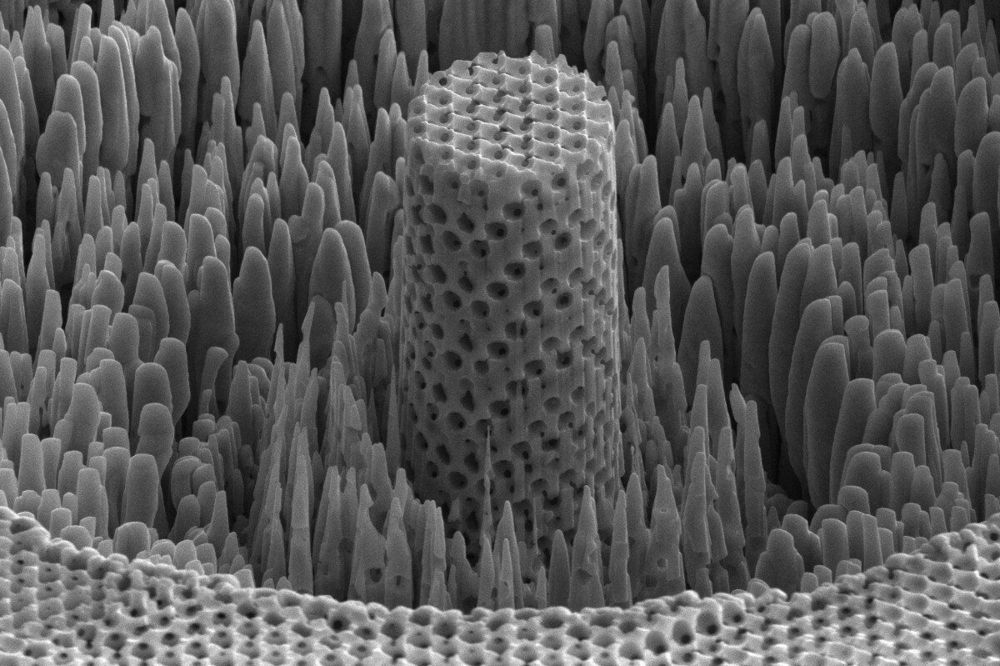
High-performance golf clubs and airplane wings are made out of titanium, which is as strong as steel but about twice as light. These properties depend on the way a metal’s atoms are stacked, but random defects that arise in the manufacturing process mean that these materials are only a fraction as strong as they could theoretically be. An architect, working on the scale of individual atoms, could design and build new materials that have even better strength-to-weight ratios.
In a new study published in Nature Scientific Reports, researchers at the University of Pennsylvania’s School of Engineering and Applied Science, the University of Illinois at Urbana-Champaign, and the University of Cambridge have done just that. They have built a sheet of nickel with nanoscale pores that make it as strong as titanium but four to five times lighter.
The empty space of the pores, and the self-assembly process in which they’re made, make the porous metal akin to a natural material, such as wood.
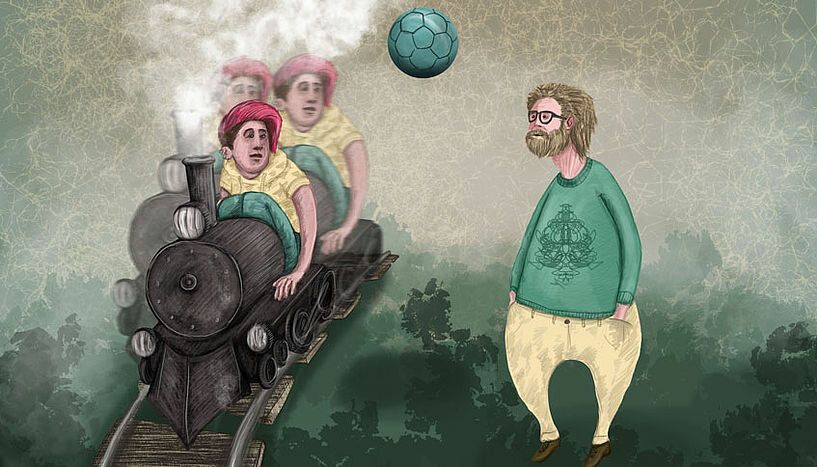
Researchers at the University of Vienna study the relevance of quantum reference frames for the symmetries of the world.
According to one of the most fundamental principles in physics, an observer on a moving train uses the same laws to describe a ball on the platform as an observer standing on the platform – physical laws are independent on the choice of a reference frame. Reference frames such as the train and the platform are physical systems and ultimately follow quantum-mechanical rules. They can be, for example, in a quantum state of superposition of different positions at once. So, what would the description of the ball look like for an observer on such a “quantum platform”? Researchers at the University of Vienna and the Austrian Academy of Sciences proved that whether an object (in our example, the ball) shows quantum features depends on the reference frame. The physical laws, however, are still independent of it. The results are published in Nature Communications.
Physical systems are always described relative to a reference frame. For example, a ball bouncing on a railway platform can be observed either from the platform itself or from a passing train. A fundamental principle of physics, the principle of General Covariance, states that the laws of physics which describe the motion of the ball do not depend on the reference frame of the observer. This principle has been crucial in the description of motion since Galileo and central to the development of Einstein’s theory of relativity. It entails information about symmetries of the laws of physics as seen from different reference frames.